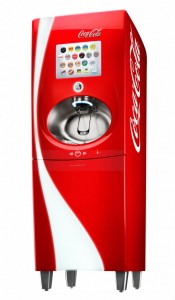An Actionable Guide to Planning and Executing Your Transformation Strategy

GUEST POST from Chateau G Pato
In today’s rapidly evolving digital landscape, businesses are faced with the critical challenge of adapting to the demands of a digital economy. The key to successful digital transformation lies in developing a comprehensive roadmap that outlines a clear strategy for leveraging technology to drive business growth and innovation.
Creating a digital transformation roadmap requires a strategic approach that encompasses a thorough assessment of organizational goals, current capabilities, and technology infrastructure. By developing a roadmap that is both comprehensive and actionable, businesses can effectively navigate the complexities of digital transformation and achieve sustainable success in the digital age.
Case Study Example 1: Coca-Cola
One of the most iconic brands in the world, Coca-Cola has successfully embraced digital transformation to drive business growth and enhance customer engagement. By focusing on leveraging technology to create personalized experiences for customers, Coca-Cola has been able to stay ahead of the competition and maintain its leadership position in the market.
To support its digital transformation efforts, Coca-Cola developed a comprehensive roadmap that included investing in cutting-edge technologies, such as AI and machine learning, to better understand customer preferences and deliver targeted marketing campaigns. By leveraging data analytics and automation tools, Coca-Cola has been able to streamline its operations and improve efficiency, while also enhancing the overall customer experience.
Case Study Example 2: Amazon
As one of the world’s largest e-commerce companies, Amazon has set the standard for digital transformation in the retail industry. By continuously innovating and adapting to changing consumer preferences, Amazon has been able to stay at the forefront of digital innovation and drive significant growth in its business.
Amazon’s digital transformation roadmap is centered around leveraging technology to enhance the customer experience and drive operational efficiency. By investing in cloud computing, data analytics, and artificial intelligence, Amazon has been able to streamline its operations, optimize its supply chain, and deliver personalized recommendations to customers. As a result, Amazon has been able to create a seamless shopping experience that has helped to drive customer loyalty and increase sales.
Conclusion
Digital transformation is a complex and challenging process that requires careful planning and execution. By developing a comprehensive roadmap that outlines a clear strategy for leveraging technology to drive business growth and innovation, businesses can effectively navigate the complexities of digital transformation and achieve sustainable success in the digital age. By following the examples set by companies like Coca-Cola and Amazon, businesses can learn valuable insights on how to successfully plan and execute their digital transformation strategy.
SPECIAL BONUS: The very best change planners use a visual, collaborative approach to create their deliverables. A methodology and tools like those in Change Planning Toolkit™ can empower anyone to become great change planners themselves.
Image credit: Pexels
![]() Sign up here to get Human-Centered Change & Innovation Weekly delivered to your inbox every week.
Sign up here to get Human-Centered Change & Innovation Weekly delivered to your inbox every week.

 Recently I came across an
Recently I came across an  So what is going on here for Coca-Cola?
So what is going on here for Coca-Cola?